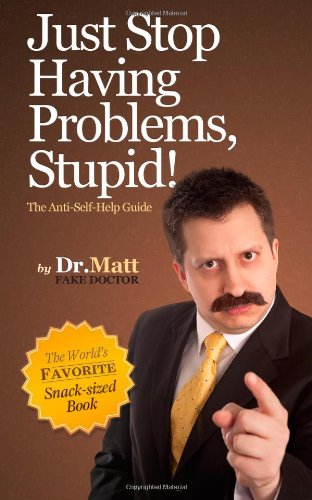 Warning, this article is full of mumbo-jumbo about self care. You probably should pass on this article (it's not like you've read the others). Our lives in service based industries, especially where responding to disasters large or small, bring us into contact with individuals, families and communities in various stages of trauma. While we understand that stress can tax our ability to maintain empathy or others and the strain of emergency response to water or fire related disasters at all hours of the day can cause us to be on edge, we may be neglecting the reality of the overall toll of this exposure. Laura van Dernoot Lipsky is pioneering a methodology outlined in her book Trauma Stewardship which provides An everyday guide to caring for self while caring for others. If you are still reading, maybe you have witnessed the impact of secondary trauma in yourself and/or your response teams. In one profile outlined in the text, Cheri Maples who is the outgoing assistant attorney general for Wisconsin, discusses the revelation in her profession that there was high turnover in probation personnel which wasn’t as much related to training in the skills of the profession but rather a lack of training in personal care abilities. As she notes, “I realized we were losing people emotionally because of secondary trauma (p.138).” This has certainly been true with our teams, we know how to teach and master the skills of our professions but we don't always know how to master caring for ourselves so that we can operate at our full capacity in serving others. The value of being awake, present and aware can be taken for granted or even dismissed as being something for the gurus who deal in mythology but not in the real world. Yet the opposite isn’t seen as dangerous as it is often the status quo across multiple professions, I.E. being numb, detached and disconnected from the cumulative impact of professional stress exposure. As noted in the book, the basis of trauma stewardship is applying many of those same principles that professionals share with their clients and utilizing those methods to care for themselves. In many ways trauma stewardship is simply walking what you’re talking, or living what you preach to others. We seem better equipped to see and respond to the needs of others without taking into account the impact of that distress on our lives as well as those on our team. Cheri notes that there are three key things to taking care of yourself, first understanding the cycle for what it is, second is having friends outside of your profession and third is developing a daily practice of care (p.141). By understanding these principles we can establish methods to lead by example and enable our teams to care for each other. There is a cycle, whether you can see it or not, where we are tempted to turn ourselves off to what we are experiencing in order to cope with our daily tasks. It’s easily missed as standard operating procedures but this coping mechanism should be a red flag to ourselves and those that care about us that there needs to be a change in how we approach our profession. Key to caring for yourself so that you can operate within your strengths is realizing that you need to do so. Whether you are a professional caring for others in trauma or someone who is helping others in various stages of need, take the same principles that you would share with those you are serving and make sure that you are applying those concepts in your own life. Walk your talk. If our social circle is only composed of those who also work with us, there can be a negative reinforcement of the us-versus-them mentality that can prohibit you from seeking additional perspectives. While our friends in our field know the day to day stresses and unique challenges that we face, all parties need additional influences that can help them see things in new ways and perhaps can detect unhealthy behaviors that those in our industry would overlook as normative. Helpful insights can come from good peer discussions or they can also come from seeking mentor relationships. As we have noted previously, “Professional athletes have coaches and trainers even though they are at the very height of their professional skills, earning, and influence. Seeking the assistance of someone who can assist you to tug, carry, or chart your way through the murky waters of personal development can be a very positive and fulfilling addition to your professional adventure (Isaacson, 2017).” Developing a daily practice of care is something Lipsky goes into greater detail sharing the five directives which include inquiry, focus, balance and community. Tools such as breathing, exercising, utilizing music or sounds, rest and other positive habits are important to helping you maximize your capacity to operate within your values. If we find ourselves in a position of leadership it is important for us to be aware of these issues so that we can lead by example and facilitate practices within our teams that help identify, respond and equip our team members to remain healthy. Whether we lead many or simply lead ourselves, failure to recognize these obstacles and the tools available to positively respond to them we are cutting ourselves short of our full ability. References: Lipsky, L. v. D., & Burk, C. (2009). Trauma stewardship: An everyday guide to caring for self while caring for others. San Francisco, CA: Berrett-Koehler Publishers. Isaacson, J. (September 5, 2017) How to identify the right mentor. The Daily Positive. Retrieved from https://www.thedailypositive.com/identify-right-mentor/#sthash.N759aPeB.dpuf
0 Comments
Leave a Reply. |
AuthorThoughts on personal and professional development. Jon Isaacson, The Intentional Restorer, is a contractor, author, and host of The DYOJO Podcast. The goal of The DYOJO is to help growth-minded restoration professionals shorten their DANG learning curve for personal and professional development. You can watch The DYOJO Podcast on YouTube on Thursdays or listen on your favorite podcast platform.
Archives
March 2023
Categories
All
<script type="text/javascript" src="//downloads.mailchimp.com/js/signup-forms/popup/unique-methods/embed.js" data-dojo-config="usePlainJson: true, isDebug: false"></script><script type="text/javascript">window.dojoRequire(["mojo/signup-forms/Loader"], function(L) { L.start({"baseUrl":"mc.us5.list-manage.com","uuid":"b9016446bd3c6a9f0bd835d4e","lid":"83282ffb9e","uniqueMethods":true}) })</script>
|
Jon Isaacson |
Connect. Collaborate. Conquer.
© COPYRIGHT 2015. ALL RIGHTS RESERVED.
|



 RSS Feed
RSS Feed